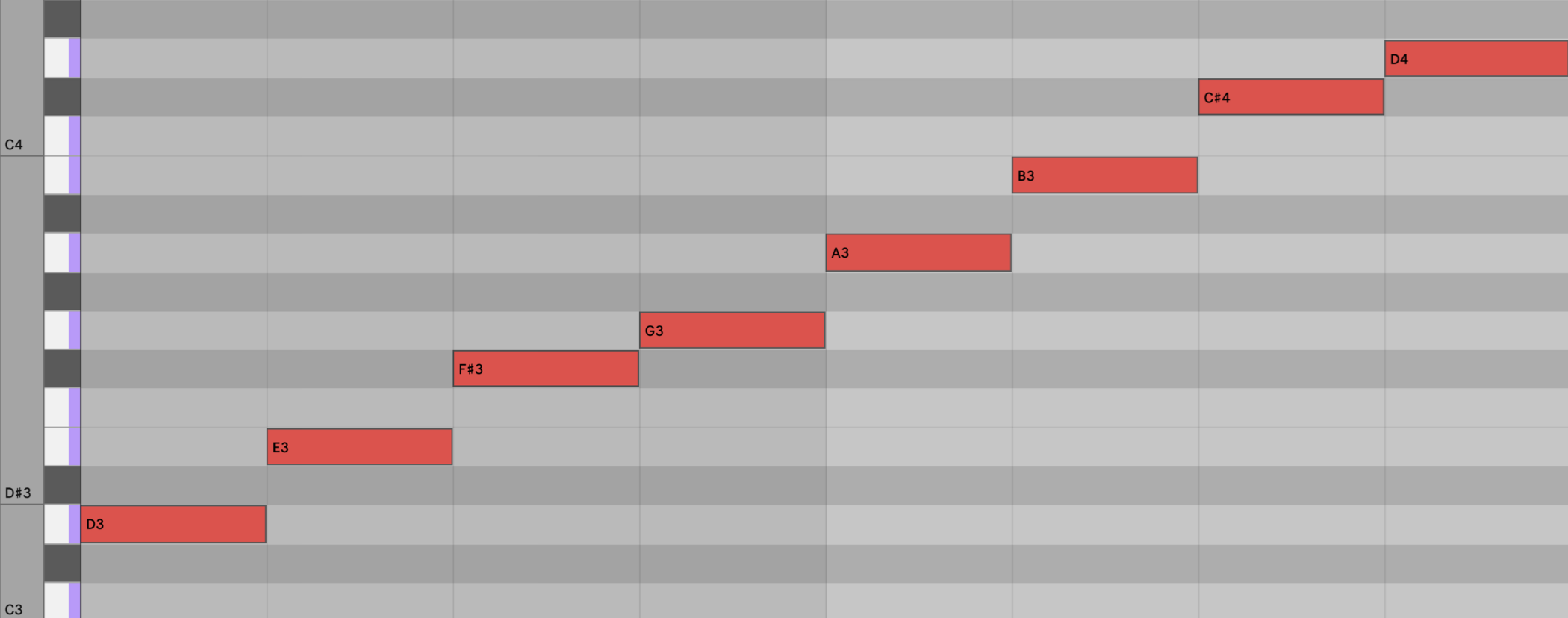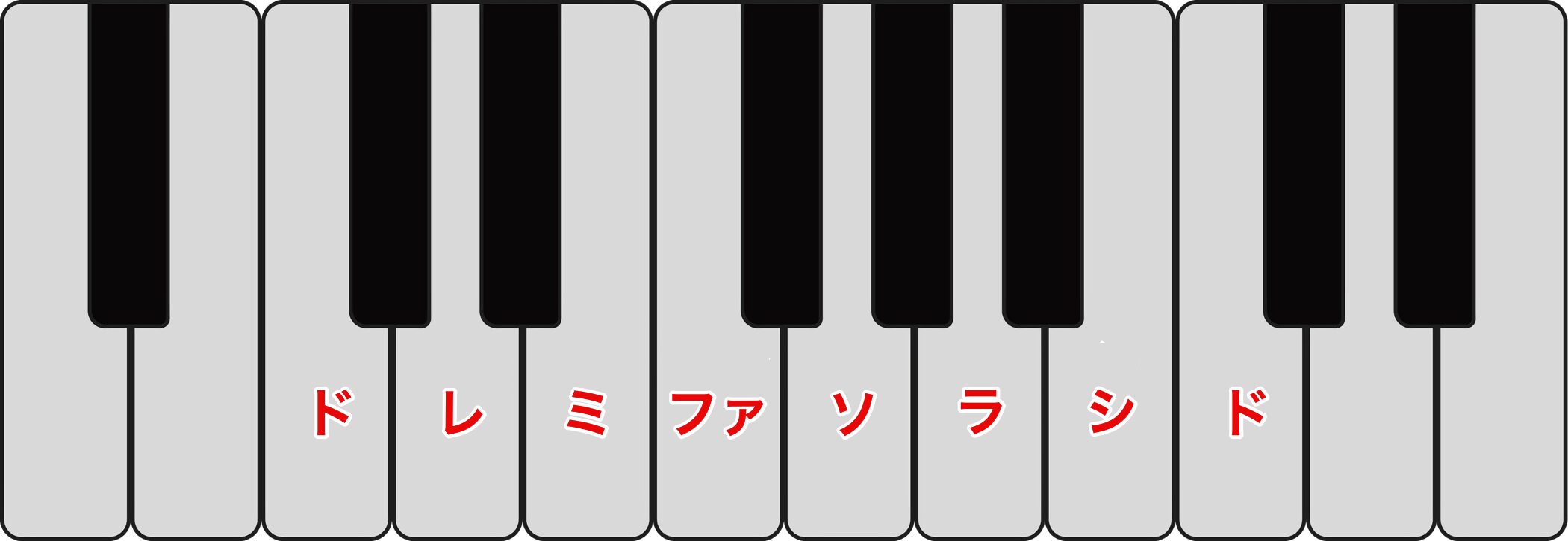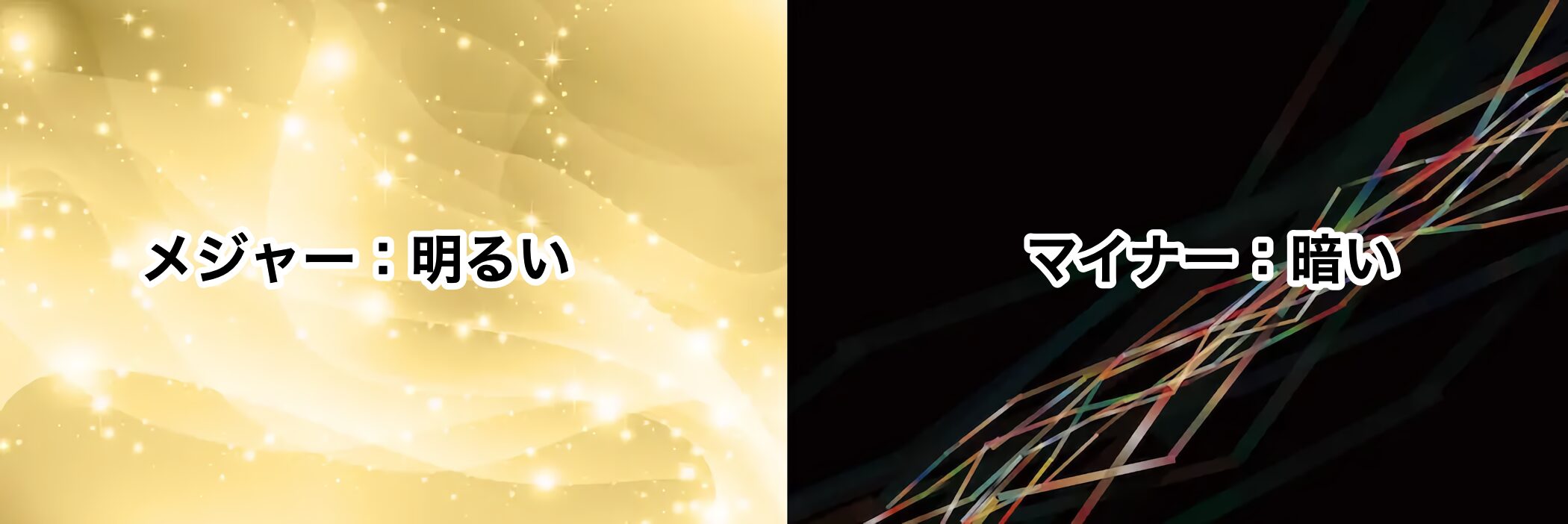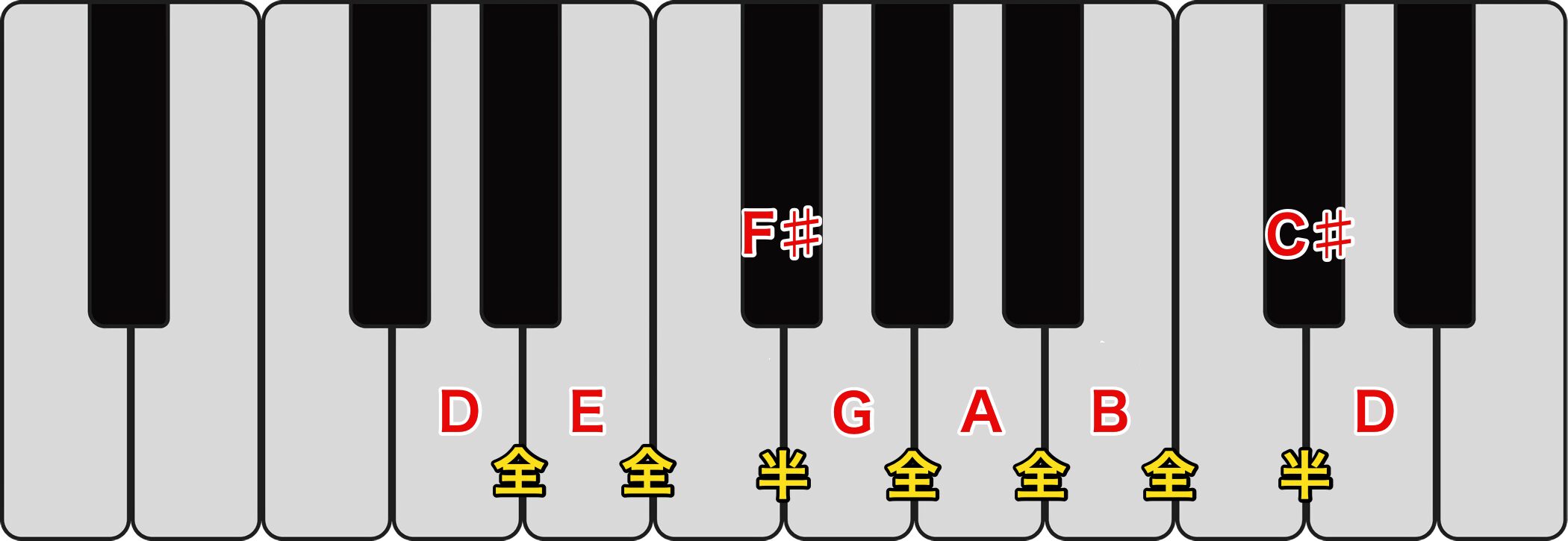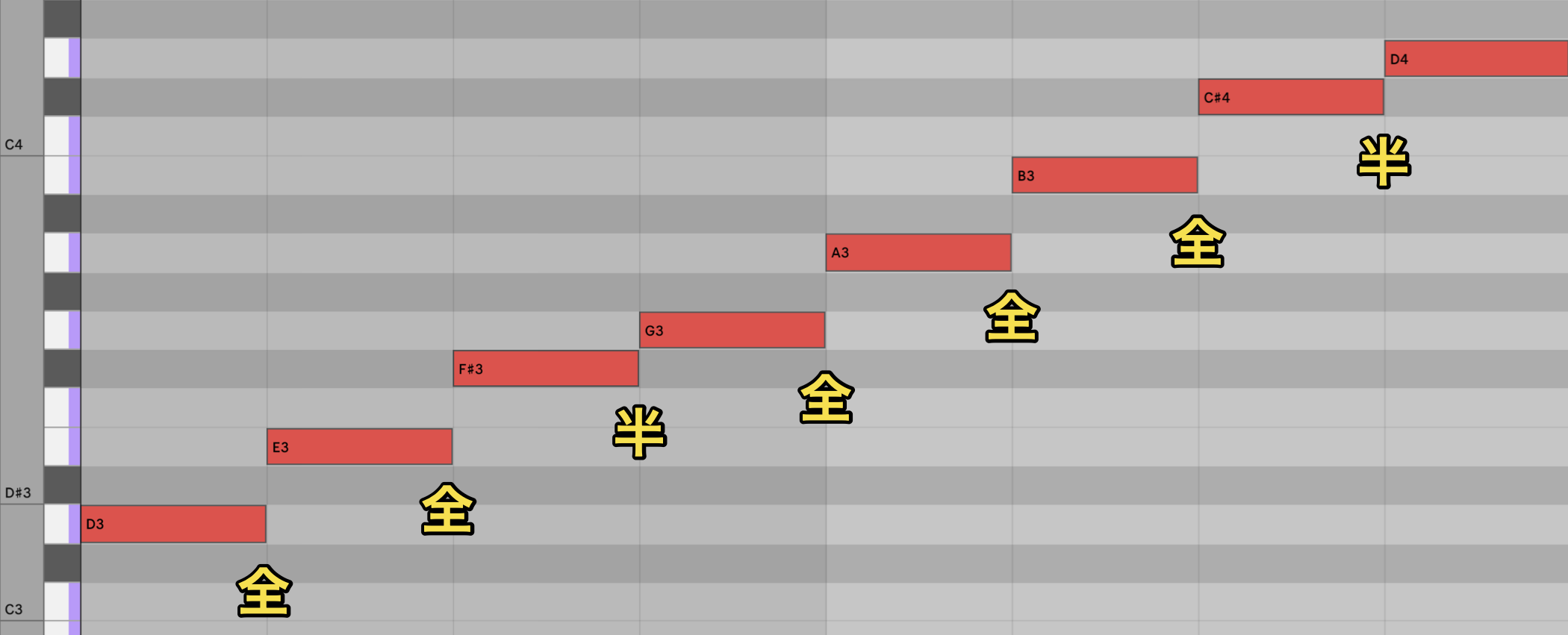メジャースケールと階名について/音楽理論講座
音程の間隔と関係性に注目する

今回は、メロディーの制作、コードやキーなどに必要な知識、メジャースケール+αを学んでいきましょう。
まずは、こちらをお聴きください。
「C D E F G A B C」じゃないの?いや、そうは聞こえなかった!
そうは聞こえなかった人は、絶対音感の持ち主かもしれません。
実は「D E F# G A B C# D」だったんです。
しかし、ドレミファソラシド〜♪と歌うことができます。
いえ、歌っていいのです。
一度上記を忘れていただいて、ドレミファソラシドという言葉を聞いて、多くの方がイメージする配列は下記です。
小さな頃習ったドレミファソラシド。
実は、Cメジャースケールという名前があります。
コードの名前で、「メジャーコード」「マイナーコード」など、名前を聞いたことある方もいらっしゃると思います。
- メジャー=明るい マイナー=暗い
というイメージを、持っておきましょう。
少し先の内容になりますが、下記4つの響きを確認してみましょう。
- Cメジャースケール上下
- Cマイナースケール上下
- Cメジャーコード
- Cマイナーコード
いかがでしたでしょうか。
スケール、コード関わらず、メジャーは明るく聞こえ、マイナーは暗く聞こえたはずです。
では、Cメジャースケールのスケールとはなんでしょうか。
- スケール=音を高低の順番に並べたものです。
シンプルに、音を順番に並べたものと覚えてしまいましょう。
日本語では、音階とも言います。
Cメジャースケール、ということは、Cから始まる明るい音階ですね。
ここで、各音の間隔に注目してみましょう。
「全音 全音 半音 全音 全音 全音 半音」という規則で並んでいます。
では、冒頭でお聞きいただいた、「D E F# G A B C# D」の間隔を見てみましょう。
「全音 全音 半音 全音 全音 全音 半音」という規則で並んでいます。
Cメジャースケールの間隔と全く変わりません。
もちろん、ピアノロール上も同様の間隔です。
間隔が変わらないということが、とても大切です。
この間隔を維持することで、各音からのメジャースケールを作成することができます。
Cメジャースケールを打ち込み全選択した後、そのまま主音のCをDへ移動してみましょう。
各ノートの間隔を保ったまま平行移動できます。
それぞれの間隔は変わらないため、「Dメジャースケール」になります。
この要領で、全鍵盤から始まる12のメジャースケールを作成可能です。
各音からのメジャースケールが、今までよりも容易に把握可能になります。
練習として、全音程からのメジャースケールをご確認、練習してみてください。
階名_移動ドについて
冒頭で、下記のような表現をしました。
「ドレミファソラシド〜♪と歌うことができます。いえ、歌っていいのです。」
カラオケで、キーを変更しても楽曲自体は変わりません。
名曲は名曲のままです。
これは、各音程の間隔はそのまま維持して上下させているためです。
ここで、階名についてご説明致します。
- 階名=スケールの主音を”ド”とする呼び方です。移動ドとも呼ばれます。
「Dメジャースケール」の構成音は、「D E F# G A B C# D」です。
この「D(主音)」を「ド」として考えます。
音の間隔は「ドレミファソラシド」と同じです。
よって「D E F# G A B C# D」 を「ドレミファソラシド」と歌えることができます。
このように「♯/♭」が沢山ついて、複雑になるキーでも、簡潔な「ドレミファソラシド」で考えることができます。
音の間隔を把握しやすくするのが「階名」です。






